The development of fine motor skills in children. Games for the development of fine motor skills of hands using non-standard equipment.
Appendices 2
Didactic games "Development fine motor skills hands "
"Pears and apples with a button"
Purpose: exercise children in fixing the concepts of “big - small pear”, learn to fasten and unfasten pears, apples, where the child reinforces the concepts of “one”, “many”, the development of fine motor skills of hands.
Equipment: pictures of apples, pears, threads, buttons, cardboard for the layout of trees, adhesive tape for "lamination".
The course of the game: Let's play "Hurricane" - blowing on a tree and swinging it with one hand, the teacher or the child unfasten the apple from it. “Babakh! The wind blew off the apple, it fell to the ground. ” They propose a child to be blown away - to blow, to shake the tree, then to unfasten the apples.
Didactic game: "Feed the bun"
Objective: the development of fine motor skills and tactile sensitivity.
Equipment: low plastic jars with lids, cereals (beans, peas, buckwheat, and others).
The game: the teacher tells the children that our Kolobok is hungry and needs to be fed. Children take from the jar grits and put in the hole of the mouth
Didactic game "Crushes-notions!"
Objective: to strengthen and develop fine motor skills of the hands, hand-eye coordination; the formation of the ability to combine in color (using different croup).
Equipment: various types of cereals (beans, rice, millet and others).
The course of the game: First, it is necessary to pour millet on a tray with an even layer (another croup can also be used), and then, using red beans, a contrasting color is better distinguished) and different patterns and pictures are superimposed.
"Dorisuyu picture using traffic jams"
Objective: to develop the imagination, creativity of children, fine motor skills of hands.
Equipment: illustrations depicting flowers, a plane, a Christmas tree, a mushroom, a cork or a button.
The course of the game: the teacher asks you to draw a picture using traffic jams or buttons.
"Multicolored clothespins"
Objective: to develop fine motor skills, imagination. Expand knowledge about the world, Exercise children in the ability to count and count, consolidate knowledge about color. Learn to correctly take and open clothes pegs, find a location by color. To cultivate an emotional attitude to the results of their work, perseverance, patience.
Equipment: plane image of objects (sun, airplane, caterpillar, fish, turnip, beet, pineapple, house, hedgehog and others), clothespins.
The course of the game: The teacher draws the attention of the children that the artist painted objects, but forgot to draw some details. Offer the children to help the artist and with the help of clothespins to finish the image.
"Multi-colored balls"
Objective: the development of fine motor skills of hands, fixing primary colors.
Equipment: white and silver cardboard, felt-tip pens of primary colors, glue-pencil, colored cardboard balls, adhesive tape for "lamination", pictures of fairy-tale characters, stickies.
The course of the game: the tutor asks the children to attach the balls by color.
Exercise "Funny pencils"
Objective: to improve the coordination of hand movement, the development of finger mobility, fine motor skills.
Equipment: colored pencils, kinder, eyes.
The course of the exercise: The child rolls a pencil between the palms, fingers, saying: “I roll the pencil in my hand, I twist it between the fingers.
Certainly every finger will be obedient to teach. "
"Ladoshka - freeze!"
Purpose:development of statistical coordination of movements of fingers, exercise in holding a pose.
Instruction: stretch your arms forward with your fingers apart and try to hold for 10 seconds. If you can hold a pose, then put your hands on the table. The teacher can lightly attach the palm on the hands of a child.
"Hi Bye!"
Purpose: training in bending and unbending all fingers together and alternately.
Instruction: children bend their arms in their elbows, hold their hands in front of their faces, bend and unbend their fingers at the same time, without squeezing them into fists. Next, bend and unbend in turn, starting with the thumb.
10. “Finger travel”
Purpose: development and training of the coordination of finger movements, the development of the tips of the fingers, the development of attention.
Material: Sheet of paper, which depicts 2 houses in different ends of the "islands" for the movement of fingers.
The course of the game: the child places his fingers near the first house. Then he begins to move his fingers along the islets to another house, without taking his fingers away from another “mound”.
Rules:
you can move, for starters, using 2 fingers;
all fingers must participate;
you can not tear off the first finger, without having moved the other one.
"Treasure"
purpose: development and training of the coordination of the movements of the fingers, the development of the tips of the fingers, the correlation of colors, the development of attention.
Material: Figure 1 (see below)
The course of the game: go over bumps strictly on the map, which is located above the chest.
Rule:
all fingers are involved;
do not remove the first finger from the hummock until it passes the other finger.
“Have time!”
Purpose: development of dynamic coordination, alternation of hand movements.
The course of the game: (played by 2-10 people) during the game, children build a bar from their hands, producing various generally accepted combinations.
For example, fist - fist - palm.
Rule: You can not be wrong. The hand that made the mistake is removed.
12. “The Bunny and the Mirror”
Purpose: improved coordination, automation and smooth switching.
Instruction: left palm up, doing a "goat". We impose a right hand on top of it, which also depicts a "goat" (backside). Expose the middle and ring fingers of both hands up and down and move them in opposite directions.
13. "Birdhouse"
Purpose: palm exercise.
Instruction: palms are folded together, fingers look up, elbows - in different directions. Then, without extending the palms and not lowering the elbows, lower the hands down, bending the wrists.
14. "Chair"
Purpose: development of dynamic coordination, alternation of movement.
Instruction: left palm straight up. A cam is attracted to its lower part (with a thumb towards itself). If the child easily performs this exercise, you can change the position of the hands alternately at the expense of times.
15. "Table"
Purpose: development of dynamic coordination, alternation of movements, development of switchability.
Instruction: left hand in cam. On top of the fist palm falls. If the child easily performs this exercise, you can change the position of the hands: the right hand in the cam, the left palm on top of the cam. You can do alternately at the expense of times.
16. “Drummer”
Purpose: development of the skill of voluntary movements with the rejection of motor stereotypes.
Instruction: Beating one measure with the right (left) hand, simultaneously with the beat, beat with the right hand, hit the table with the index finger of the left hand.
17. “Complicated Drummer”
Purpose: development of the skill of voluntary movements with the rejection of motor stereotypes, retention of posture.
Instruction: put your right (left) hand with your fingers apart in front of you, place your index finger on the ring or middle finger on the index finger (or vice versa) and slightly tap the pace.
18. "Pliers"
Purpose: activation and preparation of fingers for working with objects (pen, pencil, scissors).
Instruction: the child pinches the edges of the table between straight fingers (squeeze as much as possible). Exercise is performed several times.
19. “Even-Odd”
Purpose: the development of skills spatial orientation on paper; nurturing an emotional, positive attitude to the game.
Material: 2 pens of different colors, sheet in a cage.
The course of the game: on one edge is marked the border and on the other. The distance is chosen by players arbitrarily. Players must walk in turns, marking the line (straight, diagonal of the cell) from the end to the next end of the cell and so on. Wins the one who comes first to the border (indirect boundaries).
Games for the development of fine motor skills from unconventional materials
Games for the development of fine motor skills of hands from non-traditional materials "Our hands are not for boredom!"
"The origins of creativity and the talents of children at their fingertips ...The more skill in a child's hand, the smarter the child. "V.А.Sukhomlinsky
Modern realities dictate their sometimes high demands not only to adults, but also to children. For the most successful adaptation of the child in society, it is necessary to ensure such development of his speech, which would meet modern standards. M.M. Koltsova in his work “A child learns to speak” indicates that “the speech areas of the human brain are formed under the influence of impulses from the fingers”. This means that the more the child understands, wants and tries to do with his hands, the more intelligent and resourceful he is. After all, at the fingertips it is a stimulator of mental activity, a storehouse of creative thought, “which nourishes the child’s brain, expands vocabulary, contributes to a positive emotional state, increases the overall tone, reduces psycho-emotional tension, coordinates the movements of the fingers, and teaches them to conscious, accurate, targeted movements , facilitates mastering the skill of writing. " And if you actively influence the center of the brain responsible for the movement of the fingers, in turn, the area of the brain responsible for speech will be activated. Thus, the function of the hand and speech develop in parallel.
But what is interesting: with all the importance of the game for child development, it leaves our life. Today in our society, the game is less and less filling the life of a child. Nowadays, unfortunately, with the rapid pace of life of adults, according to statistics, many children have an overabundance of modern toys and TV-cartoons and, as a result, a lag in motor development. Children do not know how to tie shoelaces, fasten buttons, so parents buy shoes and clothes with Velcro or zippers - because this is faster. It is this fact that pushed the schooling to autonomy far back. But adults often forget that children should be taught from an early age to independent activities, because the child’s desire to do something independently can become an important point in the development of a young person. If not so long ago, children together with adults did more with their hands: they sifted through cereals, knitted and embroidered, made dolls, but now few people pay attention to this. And not many adults can remember this from their childhood. Therefore, our modern children have poorly developed fine motor skills, that is, the ability to perform small movements with hands and fingers. The result is that most preschoolers are not ready for school - they write poorly, speak poorly and, as a result, do not succeed in adulthood.
Many modern parents began to think about how best to develop their baby. They buy various sorters, finger labyrinths, cords, and similar games, spending a lot of money and personal time on their acquisition.
This article offers you a game using items and materials that are in "walking" accessibility. This will not only save the family budget, but also spend more time with the child. Non-traditional material provides ample opportunities for the development of the game, and the game in turn helps to create a situation of success for each child.
The idea of creating games from non-standard equipment did not come immediately. The need to move away from the traditional understanding prompted the search for something unusual. I wanted to find something that could give the child more joy, and adults less trouble, with interesting, developing, and most importantly, affordable. In addition, these developments can be used by both caregivers in the course of their daily work and parents.
This technique is good because it makes a certain novelty in the activities of kids, makes it more exciting and interesting. Children are madly in love with playing with things that are not supposed to be used for games with objects that are used by such adult dad and mom. Parents only have to show imagination and turn everything into a fun fairytale game. The joint play of children and adults in a relaxed atmosphere will allow them to get closer and establish a base of trust. After all, it is in the preschool age of a child that an adult has a unique opportunity to become meaningful. Become for your child the person to whom, becoming an adult (especially in adolescence), the child can ask for support.
So. We offer you a few examples of creative developments for the development of fine motor skills of the baby.
Game "Clouds"
Equipment: bath foam (dishwashing detergent), dishwashing sponge, deep dish
Description: Offer to make clouds and fill them with a plate. Drip bath products (for washing dishes) on a sponge. The child must compress the wet sponge, thus creating foam (clouds). You can alternate hands.
Game "weave rug"
Equipment: a lattice for the sink, multicolored ribbons with a width of 2.5 cm, sewn at one end to the edge of the lattice.
Description: The tutor asks the children to weave a beautiful rug, slipping the tape into the windows "from the top - down", "from the left - to the right". At the initial stage, the tutor shows how to insert the tape into the window.
Game "Hedgehog"
Equipment: colander, cotton swabs.
Description: invite the child to insert cotton buds in the holes of the colander.
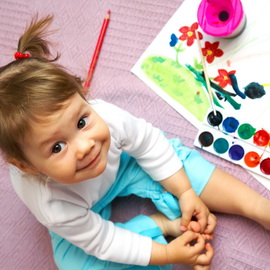
Game "Designer of sticks"
Equipment: Plasticine, matches (skewers, toothpicks with cut ends, can be of different lengths).
Description: Suggest a child to construct any object. Young children can offer a picture. To help roll balls of plasticine. Older children can themselves dream up what they will do. Models of construction can be made both two-dimensional, and volume.

Game "Web"
Equipment: basket, gum, small toys.
Description: pull the elastic in the basket on the type of "web". Put toys on the bottom. Ask the child to retrieve the toys. A more difficult option is to get toys using an item such as a spoon.

The game "Turrets"
Equipment: wooden skewers, tubes for a cocktail of different colors.
Description: Cut the tubes. On skewers stick multicolored adhesive tape, you can paint it with paint. Clip skewers using plasticine on the board. Offer the child to build a tower (put the sliced tubes) according to the color of the skewer.

The game "Hide - find"
Equipment: foil or paper, small toys.
Description: offer to play hide-and-seek with toys to a child. Wrap the toy in paper or vice versa unfold neatly without tearing the paper.
Game Catch
Equipment: Tight bag with clip (zip-lock), hydrogel (orbizy).
Description: This game can be started as an experience by placing the orbits in the water and observe how they swell (grow). After put the swollen hydrogel in the package. Close tightly. Offer the child to catch the ball with his fingers and crush it. You can complicate the game by asking to catch the balls of a certain color (in the presence of multi-colored orbiz).
Orbiz very versatile material for games with children. It is beautiful, affordable, pleasant to the touch. The minus is only in the case of direct access, you only need to play under the supervision of an adult.
Hydrogel can be laid out by color in different vessels, plates. You can just fill them with jars, bottles. As a variant of the game, you can point out fishing out of the water with your hands or a spoon. The ability to use orbiz limited only by fantasy.



And finally, it is worth noting that no toy, no exercise will not be developing, if they are not interesting to the child. And then the task of adults, our task is to support the child, if necessary, to assist, and of course be patient and calm. Remember that any learning process requires a lot of patience and work.
Be wise and attentive!
"Children should live in the world of beauty, games, fairy tales, music,
drawing, fantasy, creativity " Game didactic aids for the development of hand motor skills of preschoolers
Your baby has grown up, his speech and thinking are actively developing. He already knows a lot and, at the same time, is ready to conquer new heights, master more complex skills and become more independent.
This will help him games for the development of fine motor skillsbecause they stimulate not only the child’s speech development, but also other areas - attention, memory, logic.
You can sew all these toys yourself and please the crumbs with a useful toy.
Lacing costs separately in this category, as they require special skill. At this age, suitable toys with medium holes, where it is assumed any chaotic lacing: a caterpillar in an apple, a spider weaves a web, a mouse nibbles cheese, etc. Logical lacing or assignments with lacing until the baby is too tough.
Games in the kitchen
The easiest option - sorting croup. It is more convenient if the grains are different in size: buckwheat and peas, rice and beans, etc. As a goal you can have:
- Feed different animals with different grains;
- Sort the cereals before performing the applications (suitable if the child likes to make applications from cereals);
- Competition. Divide the task into two piles and invite the child to fight: who will sort the croup faster will receive a prize. It is desirable that the child won, because he still does not know how to lose, and next time he may refuse to play.
Stringing games. Secure the long tubular pasta on the table with salt dough or. Give your child a hollow pasta and ask them to string them on improvised rods. 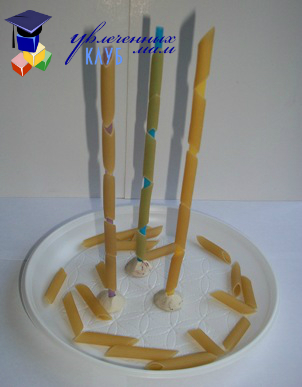
You can also wear drying on cocktail tubes or pens.
For muscle development brush in the kitchen, ask the kid:
- Beat eggs with a whisk or fork for an omelet;
- Peel boiled eggs, vegetables or fruits (bananas, tangerines);
- Salt the salad;
- Wipe off the table;
- Spread the eggs in the tray from under the eggs (for a start, you can use the eggs from the kinder);
- Wash your cup or plate. A safer option is to wash baby utensils;
- Wipe clean dishes with a towel.
Games with clothespins
Colorful clothes pegs are a great toy for babies. First, teach your baby to open the clothespins with his thumb and forefinger, then with his thumb and middle / ring finger / little finger. To make the baby interesting, use the following games:
- Make beads from clothespins;
- Decorate the bucket or box by attaching the clothespins to their edges;
- Hang doll clothes on a rope or attach it to the back of a chair with clothespins;
- Use different stencils in which you need to attach the missing elements with the help of clothespins;
- Clothespins can be a designer. Make them a house, ladder or plane.

Creative activities
AT drawing diversity is an important point, because depending on the shape and thickness of the instrument, different muscles of the hand are trained. Coloring is also good. They stimulate the baby to control the scope of the hand when drawing, thereby developing the corresponding muscles.
Of applications The most popular for this age are:
- Chipping appliqué. Cut the paper in long strips, and ask the child to tear them into equal pieces. Then stick together, creating your unique image;
- Any bulk applications: from cereals, finely chopped tissue, paper, foam, grass. The bottom line is that the child must, precisely within the contour, smear the glue with PVA glue, and then sprinkle it on top with the chosen material for application;
- Collages. Particularly relevant due to the fact that the child is interested in the process itself, and not the result. You can glue everything: magazine clippings, stickers, pasta, cotton wool, cereals, etc.
Modeling. Despite the fact that kneading fingers with plastic materials is an excellent exercise, it's time to teach your child to roll balls, sausages and make flat cakes. With her mother's help, the baby can already sculpt simple figures (snail, hedgehog, snake). In addition, a good workout will be:
- Plasticine smearing within the contour;
- Drawing clay by smashing balls (flowers, ladybird points) or smearing them (salute, Christmas tree).
- Cutting sausages;
- Various decorations and "repair" of pictures (put a patch on the clothes, decorate the Christmas tree).
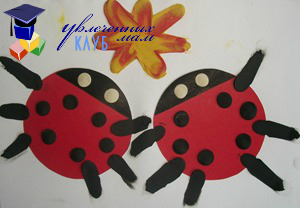
Stencils
They can be made independently of cardboard, linoleum, porous rubber. Choose a simple outline (sheet, cloud, apple, etc.) and carefully cut it with a stationery knife. You will get 2 stencils: external and internal. Suggest your child to circle them or paint over.
Scissors
At 2 years old, the child starts, shreds the paper and tries to cut out the first figures. Offer him cutting machines - draw bright thick lines on the paper with a marker: smooth, wavy, triangular or square broken, spiral. It is desirable that such a task has a game background - to help the butterfly to fly to the flower, to the bear to reach the honey, to cut a snake or a ghost (spiral).
In the books such tasks are selected taking into account the age of the child and the level of complexity.
Putting figures
You can lay out shapes with the help of counting sticks, pencils, matches, button coins, covers. The child is able to repeat the drawing only using the overlay method, so it is necessary to prepare a template in advance. You can also lay out the contours of colorings, prepared patterns and figures with pebbles or other elements.
Paper games
Presents. Have the baby prepare gifts for the toys. Wrap a cube, a ball, a plate, a typewriter in paper. Let the kid practice wrapping, and after giving the gift, unfold it so that the wrapper does not tear. In a more complex version, foil can be used as a wrapper.
Crumple paper. The kids are interested not only to tear the paper, but also to crush it. Give the crumbs a crinkle of paper, and then ask them to straighten it so that the sheet becomes even. As you master the skill, you will need to perform it with one hand.
Finger games and massage
In addition to the massage described in, you can use a special su-jok massager for each finger and a separate brush. Relief balls that your child needs to roll between their hands will do. You can finish the massage with claps and the transition to the finger games presented in this video:
Want to play with your child easily and with pleasure?
September 9, 2015, 12:56
The relationship of fine motor skills and mental activity.
The formation of the verbal speech of the child begins when the movements of the fingers reach sufficient accuracy. It has been established that in the human brain the centers responsible for the speech and movement of the fingers are located closely, therefore the speech reactions are directly dependent on the fitness of the fingers.
Conditions for the effective development of fine motor skills.
It is necessary to use all the fingers of both hands. Movement in compression, stretching and relaxation should be combined. Exercises should be based on the use of isolated movements of each finger. For the successful development of fine motor skills, it is important to train both hands. It is important in games to equally develop the subtle movements of the fingers of both hands, and in everyday life to strive to distribute various actions between the right and left hands.
The value of games for the development of fine motor skills.
Games and exercises on the development of fine motor skills are a powerful means of maintaining the tone and performance of the cerebral cortex, a means of interacting with the underlying structures. In their process, children improve attention, memory, auditory and visual perception, perseverance is brought up, play and learning and practical activities are being formed. Systematic exercises also help to develop skills for self-control and self-regulation of hand movements, not only under visual control, but also with the participation of touch, tactile-motor sensations.
Games that parents can make from scrap materials.
To strengthen and develop children's hands, coordination of movements, various exercises and actions with objects are recommended:
1. Twisting tapes.
2. Lacing. It will take a piece of linoleum with holes and a string. (game "Lacing").
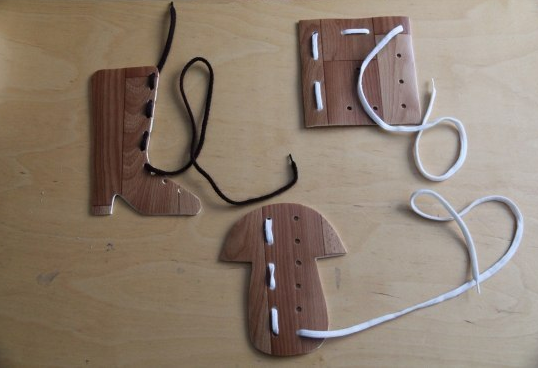
You can also find at home some item not heavy, which will have a lot of holes.
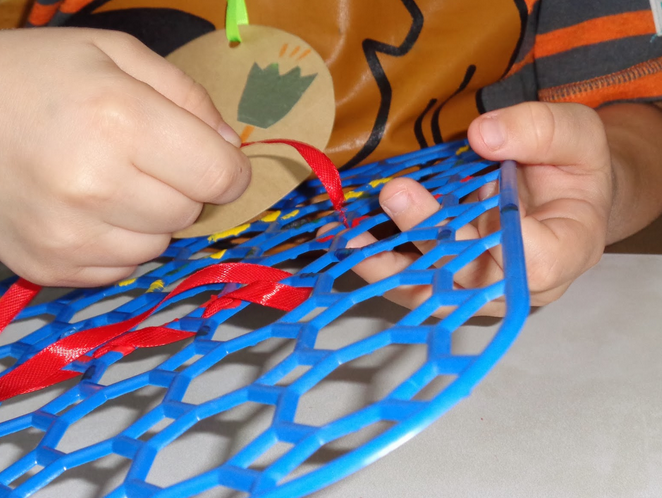
Another option ..
It will take:
It is possible to take any dense non-flowing material as a basis, for example, felt, fleece, and best of all, foamed polymer of different colors. In the chemistry shop or in the supermarket to buy rags for cleaning.
![]()
laces and limiters for laces;
buttons are large, preferably on the leg;
marker, pencil or pen;
scissors with pointed ends;
Lacing "Hedgehog"
Draw a hedgehog figurine on the wrong side of the material and cut it along the contour. On the front side, mark the nose, eye and mouth with a marker or felt-tip pen.

From the same material cut a variety of fruits, mushrooms, leaves, which the child will tie to the back of the hedgehog. If you also have a problem with the desired color, use colored paper, glue it with PVA glue. Allow the glue to dry well, or when you make holes, the paper may deform.

Lacing is ready. Take a string, make a knot at one end, or put a stopper so that it does not slip through the hole, and show the child how to attach the fruit to the back of the hedgehog. In this case, you can even come up with some kind of a fairy tale, like a hedgehog gathering fruits and mushrooms for lunch.

You can just take the figures and make more: boats, cars, butterflies, flowers, etc. You can buy bright laces and play with your child)))
Now we can offer the baby to decompose the leaves in color. Do not forget to blow like the wind, mixing all the leaves. It is very useful to include breathing exercises in classes!
There is another great game: from which tree leaf. We collect leaves of one species, for example, only maple.
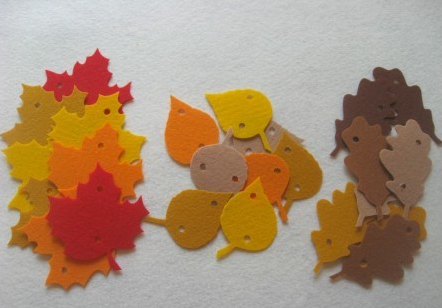
If you have played with the leaves, then you do not need to put them in the closet, they will perfectly decorate the house! We take the rope and string the leaves. For babies, the sequence can be any, and older children can be offered to string in a certain sequence. Observing the sequence, the child trains not only fine motor skills, but also attention, memory, thinking. This is a great exercise to prepare for school.
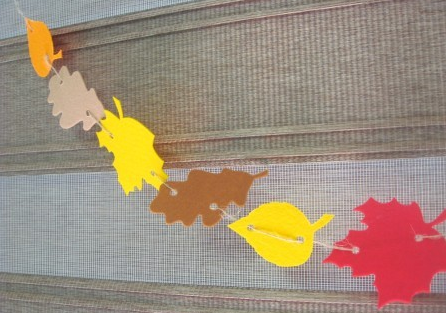
We make a tree trunk from felt, porous rubber or thick cardboard.
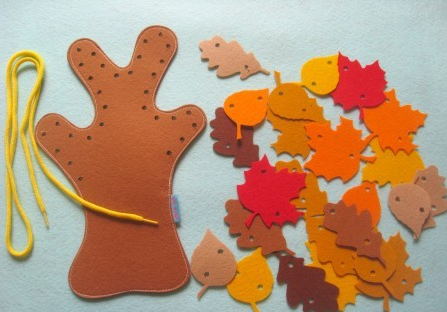
The beauty of such a lacing is that the more confused the leaves are, the more magnificent and beautiful the tree is. We are accustomed to order in such games gradually, a little workout and it will turn out nice and smooth. Children will like the tree, here you can lace up from the heart :) and no one will say what is so wrong.
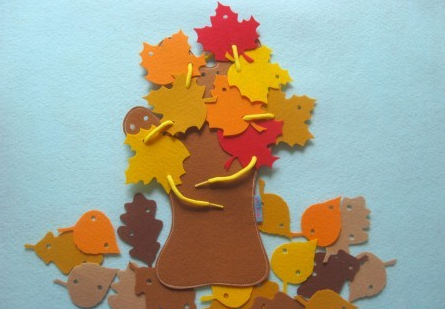
And the last version of the game for today is a wreath. Do I have to say how children love to decorate themselves and their mother, to give gifts? Such a wreath of autumn leaves can be part of the costume of the fall at a celebration in kindergarten. You can not be limited to a wreath, and make beads, a bracelet and even a ring of tiny leaves.
Choose a string or ribbon and collect the leaves. You can take several leaves at once so that the wreath is richer.
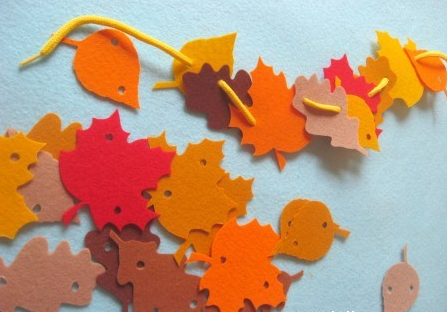
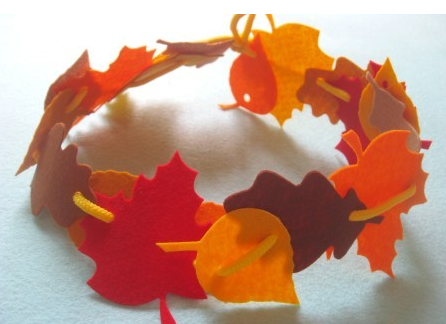
3. Button fastening. Need fabric, buttons and thread. (game "Fasteners").
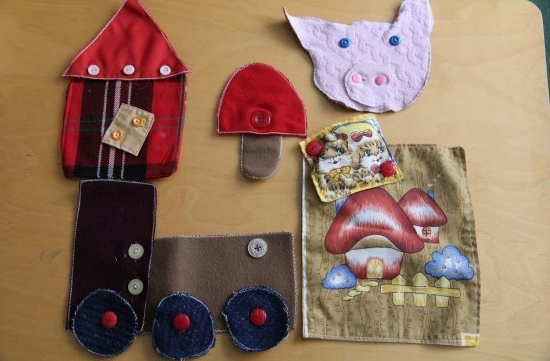
Snake, Velcro, buttons, buttons ...
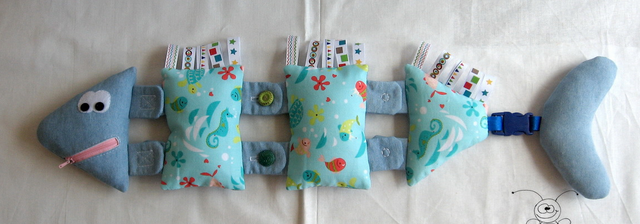
4. Laying out on a pattern, sorting stones, grains, multi-colored pebbles,

5. Games with clothespins. Clothespins and cardboard are required.



6. Unscrew and tighten the caps. Need for necks and caps from plastic bottles, a box of shoes, glue.
You can also use different size lids and different shapes, and from under the juice lid.

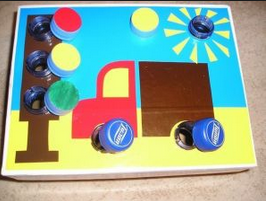
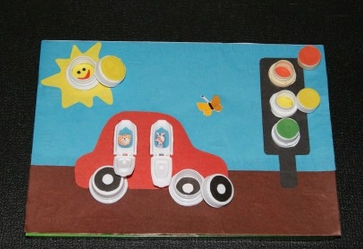



You can also use bolts and nuts of different sizes)

7. Guessing to the touch items. (Game "Magic Bag"). You will need a bag with a variety of small toys and objects.
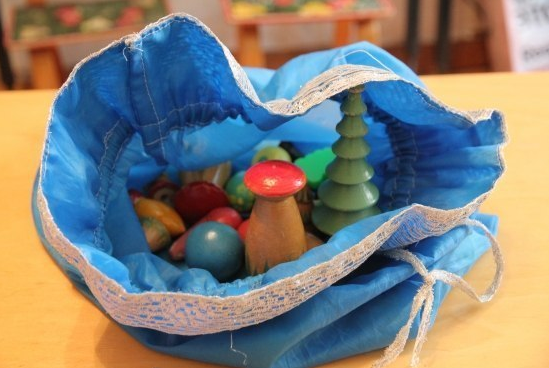
8. Rolling a pencil or pen in the palms helps to stimulate biologically active points, toning the body as a whole.
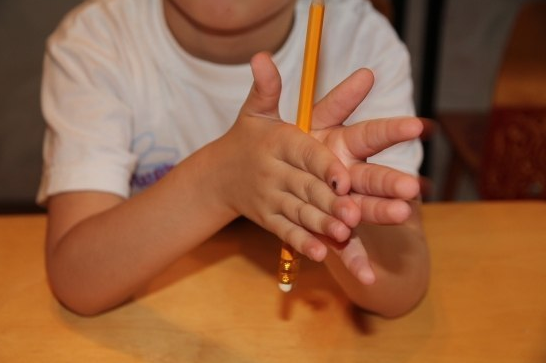 9. Stroke stencils. You will need a plastic bottle with a flat wall (suitable for a bottle of shampoo scissors.
9. Stroke stencils. You will need a plastic bottle with a flat wall (suitable for a bottle of shampoo scissors.
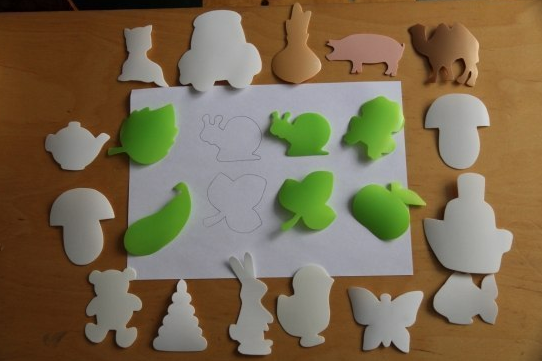 Each of these techniques is aimed at the development of the child: his musculoskeletal system, sensory sensitivity, hand-eye coordination, voluntary attention, psycho-regulation skills, develop fine motor skills of fingers through actions with objects; to form the ability to examine objects by touch; develop quick thinking; raise perseverance
Each of these techniques is aimed at the development of the child: his musculoskeletal system, sensory sensitivity, hand-eye coordination, voluntary attention, psycho-regulation skills, develop fine motor skills of fingers through actions with objects; to form the ability to examine objects by touch; develop quick thinking; raise perseverance
Fine motor skills contribute to the development of the speech center of the brain - this is a scientifically proven fact. Therefore, games for fine motor skills are the best way to accelerate the process of formation of speech skills in a child. In addition, games for the development of fine motor skills allow the child to teach the primary principles of self-service. You can use these techniques at home without consulting with teachers and pediatricians. This page offers simple and complex exercises for fine motor skills designed for the home environment.
Try to choose every day different games for the development of fine motor skills in children, thus you can enhance their beneficial effects. The alternate classes for the development of fine motor skills also broaden the horizons of the baby and enrich his vocabulary.
Games for the development of fine motor skills of the child to the preschooler
Stringing The principle of the pyramid - something with a hole must be worn or strung on a stick, string, juice straw, dry twig, etc. To play on the development of fine motor skills of hands, everything that can be strung is suitable: large buttons, beads, macaroni, bagels and drying. I remember how my little son, still very young, gladly put the drying wheel on his fingers in turns, and then with no less pleasure gnawed on a toy!

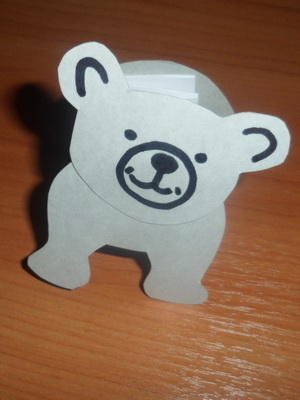
Paper toys. Paper toys - what could be easier! But the benefits of these games for fine motor skills of the child will bring no less than the most expensive "development" from the store. Teach your child to knead small leaves, roll them into balls, fold them “accordion”, fold them “snails” or tubules - all these are wonderful exercises for small fingers that do not require virtually any costs. And then all these "snails", "balls" and "accordions" are perfectly used in games.
Together with the baby, you can make a volumetric collage or application. Your treasure will be happy to tear, twist and roll the paper balls, and you stick them on a sheet of paper in the form of clouds or sheep, flying snow or crumbling leaves. The plot of the picture depends on your imagination and the baby - write a fairy tale or story while you are engaged in needlework.
When the child grows up, teach him to fold paper “boats,” “airplanes,” and other origami toys — many instructions can be found on the Internet. Playing these games for the development of fine motor skills of preschoolers, your kid will not only enjoy the "paper" creativity, but also perfectly develop his fingers.
Didactic games on the development of fine motor skills in children
Guessing game In order to organize didactic games for fine motor skills, take a pair of children's socks, in each place a small toy (for example, in one - a ball, and in the other - a cube or toys from kinder surprises). Suggest to the child to guess by touch what “hid in a sock”. The game is almost endless, because you can hide not only toys! Put in socks, for example, a walnut, coffee spoon, a lid from a plastic bottle, a clothespin. Look around, and you will see a lot of small things that will be useful for this game.
I am a magician! The principle of the didactic developmental game is the same as in “Guessing”. Take a few paired toys or, for example, two walnuts, two clothespins, two caps, two pieces of a sponge, two cases from kinder surprises. Items can be any, the main thing is that you put the same sets of these items in two boxes (or in two paper bags). The kid does not see what is inside, but he is a “magician” and can pull out the same things from two different boxes. Without looking, with one hand pulls out, for example, a piece of foam sponge from one box. And, groping for the exact same piece of sponge with the other hand in the second box, pulls it out to the surprise of the “spectators”. This "wizard"!
Pins games for fine motor development
Games that promote the development of fine motor skills can be played with the most common household appliances. Speaking of clothespins. Amazing improvised "simulators"! The usual clothespin (just try to keep it from being very tight!) Can become a bunny's ear, hedgehog needles, and sun beams. You just need to cut quite large silhouettes out of cardboard (they, by the way, will be useful more than once!), And the baby will be happy to make a hedgehog and a Christmas tree needles, decorate the sun with rays, and a cloud - with rain.
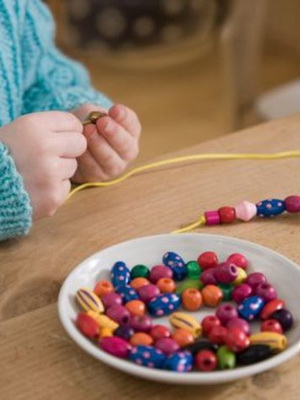

Hook some clothespins to a piece of cloth, and the baby will be happy to unhook them. And if a mom or dad fastens a few pieces to his clothes, the child will be happy to help “remove the burdock”.
More complex games for fine motor skills with clothespins - attach them to a stretched rope. And then you can also hang pictures on this rope - this is the gallery for the first child's masterpieces!
Another option for using clothespins for playing fine motor skills for children is as tweezers or forceps. With the help of pegs, you can grab and shift various objects, especially soft ones (pieces of fabric, wool pompons, pieces of thick colored threads for knitting).
Still developing games for the development of fine motor skills in children
Games that develop fine motor skills are simple, can be used anywhere, do not require expensive equipment. Even more options for classes can be found further on the page. It offers games that develop fine hand motor skills and other useful skills, such as artistic taste, accuracy, dexterity, speech, etc.
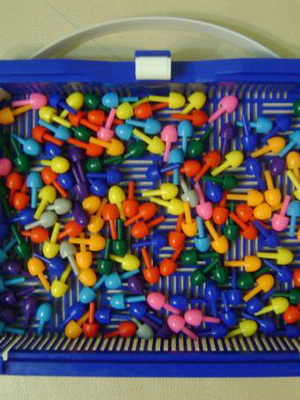
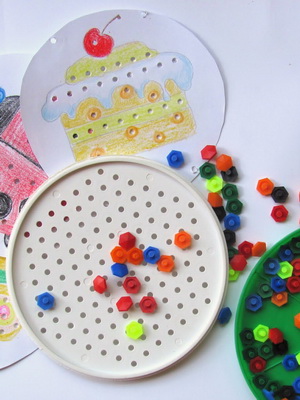
Mosaic. Mosaic is an educational game for the development of fine motor skills, it consists in laying out any patterns or images from small parts. It can be both purchased mosaics and homemade ones. For example, painted shell of boiled eggs, small geometric shapes (can be cut from colored thick paper or cardboard), even pieces of food - remember cookies, chopped vegetables, cereals, dried fruits? First, the child learns simply to lay out the simplest tracks and houses, then the “drawings” become more complicated. And in the future, homemade mosaics can be pasted on cardboard and get a “real picture” (from the shell, from the beans and dry peas, from buckwheat, millet, rice). And even insert the creation into the frame and hang it in a prominent place!

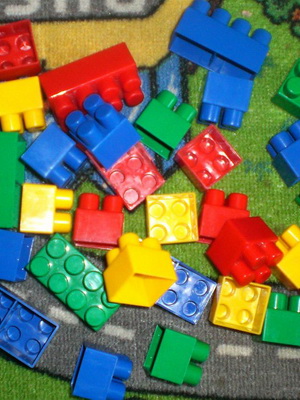
Constructor. The constructor is educational games for children for fine motor skills, which it is advisable to first acquire from large parts: cubes, pyramids, cylinders. They are easy to fold and destroy. Then the magnitude of the parts decreases, but the parts themselves should be more and more. And here the parts may have large attachments to collect specific products. Types of designers are very different - from plastic and wood to metal and magnetic. Pay attention: fastenings on details are desirable different, so that the baby learns to connect them in various ways. Today, for example, build a wooden house of "logs", next week you will create a spaceship of tubes with magnetic tips. And after some time, fasten the toothpicks with plasticine balls - I wonder what you can do?
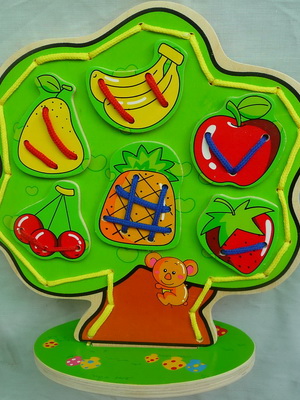
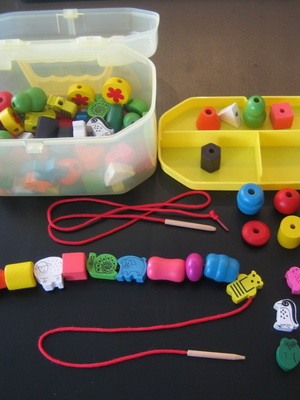
Lacing These are the most accessible and useful educational games for the development of fine motor skills of hands, which allow the child to learn the basics of self-service. It’s easy to do a “simulator” for your kid with your own hands. You will need a cardboard, a hole punch, a thick thread and a piece of ordinary scotch (adhesive tape). From cardboard cut out the shape of any object or animal (for example, a little man in clothes to be laced; or a shoe; or a leaf of a tree). And you can use those “Cardboard figures on which clothespins were attached. Now you make holes with a hole punch. And you make a cord from a thick thread or twine — you wind one end of it tightly with a piece of adhesive tape so that the edge of the thread does not fluff and it is easier for the child to lace. The other end is better tie a large knot. So the lacing is ready. And you can often replace the figures; cutting and making holes in a piece of cardboard is not at all difficult. And you can also lace the shoes of your father, especially new ones. But the old ones that are cleaned will also work.
Educational activities with the child for fine motor skills
Plasticine classes for fine motor skills of hands - a great job for children fingers. Riding balls, making “worms” and “trunks-twigs”, modeling “flat cakes”, smearing plasticine on a plank in the form of a background of a picture is a wonderful training of baby's fingers. I offer two simple recipes for making "homemade plasticine", i.e. salted dough. For classes for fine motor skills in a child, it is usually not painted (they paint the finished crafts), but, if necessary, you can tint with food dyes.
First option:
- 1 cup flour;
- 1 cup salt;
- 1 tablespoon vegetable oil;
- 1/2 cup water.
Knead the dough for developmental activities for fine motor skills and send in a plastic bag in the refrigerator for 2 - 3 hours. You will get ready to use homemade clay. Weight for modeling, which did not have time to use, is always stored in a hermetically sealed container or in a plastic bag in the refrigerator.
The second option:
- 1/2 cup flour;
- 1/2 cup salt (if “Extra”, then less);
- 1 tablespoon of starch;
- water.
First mix all the "dry" products, the child himself can perform this responsible work. Then, adding a little water, knead the stiff dough. This "bun", wrapped in a plastic bag, can be stored in the refrigerator for several days.
Self service. And this is also a game with the development of fine motor skills. We thread large buttons into loops, crack velcro, buttoning and unfastening sandals, comb the hair of the doll and braid it, stretch it and tighten socks and socks ... All these actions can be played up - for example, to compete, who will wear the jacket faster and zip the zipper. Or click the buttons on the blouse, most fingers into gloves - all these self-service skills learned in the game will help the kid to feel confident: “I can already!”
Pencil games to develop fine motor skills
Circled - these are games aimed at developing fine motor skills, this can be done not only with a pencil or felt-tip pen. For the crumbs, wonderful exercises - just stroke a finger (for example, circle the inverted mold in the sandbox with your finger - you will have a “picture”!). In general, you can encircle anything. For example, such a game with a pencil for fine motor skills: fold a sheet of paper (the shape and size do not matter, as long as the sheet is unnecessary). Then from the middle of an arbitrary tear out a piece and straighten the sheet. The child turns the hole out onto the album sheet, and the flight of fantasy begins! It comes up with what it is, and whole pictures are drawn around the circled figure!
Scribble. Show your child how to draw different lines on a piece of paper: straight, curved, broken, zigzag. He is happy to "work" and decorate the sheet with his astrakhan. When the child’s hand holds the pencil confidently, play some games.
- Take turns with the baby on one sheet to draw several different lines so that they intersect. Decorate after crossing the “sector” in different ways. Let the child simply “paint” one “piece” with his favorite color, another - make it striped or “speckled” (put short strokes), third - decorate with large dots, fourth - cover with squiggles, etc.
- Give the kid a piece of paper, a cotton swab and some paint. Let him dip a cotton swab into the paint and “poke” the sheet where he wants. It turns out a scattering of large points. Show your child that some points can be connected. There will be some kind of figure: a fish, a flower, a house - it depends on what you see at the points, explaining the game. And the next time, the baby will start looking for something in its “constellation” of points. And, I think, more than once will surprise their parents with dotted masterpieces!
- Exactly the same game, only points the child puts colored pencils, two or three colors. And by connecting the dots, you can already find several color figures "one in another." And then give my mother a mysterious picture, let him figure out who or what drew her favorite treasure. Blue cat and mahogany? Or a yellow boat and a green house?
- Show your child how to carry a pencil on paper without taking the stylus off the sheet. It turns out a long, long "road" - with turns, loops, running one way or the other. On this "track" you can drive a small toy. For example, say that the bunny ran away from the fox and “tangled the tracks”, and the fox now runs after the cunning hare. Now, invite the child to draw his own "track" - a great game for the development of fine motor skills of children's fingers!
- On this principle (long lines with turns and zigzags), you can build the first maze for a baby. Usually, children, having understood the rules, are very addicted, leading through the labyrinths “hedgehog to mushrooms,” “dog to the house”, “butterfly to the flower”, etc. And the heroes of the labyrinth can be schematically drawn or used small toys.
Other activities for the development of fine motor skills in children
 Drawing and prints. The volume of one page does not allow to tell in detail about other activities for the development of fine motor skills of the hands, so I will simply list some more.
Drawing and prints. The volume of one page does not allow to tell in detail about other activities for the development of fine motor skills of the hands, so I will simply list some more.
Lesson with the child drawing for the development of fine motor skills can be held using the following tools:
- finger paints;
- tassels;
- cotton swabs;
- dishwashing sponges;
- bird feathers;
- old toothbrush ...
Prints with small dies:
- lids and bottoms of plastic bottles, jars and plastic cups;
- matchboxes;
- notched and unfolded in the form of "petals" cardboard tubes and straws for juice;
- slices of hard raw vegetables (potatoes, carrots);
- large figured buttons;
- cork stoppers;
- own palms ...
You can make prints for children on fine motor skills for children on paper, on cloth, on plasticine, on modeling paste, on sand, on snow ...
The stamp pad is easy to make from a sponge for washing dishes. Apply a small amount of paint on the foam surface of the sponge, distribute evenly. Apply the stamp to the sponge and make prints!
Article read 595 times (a).



